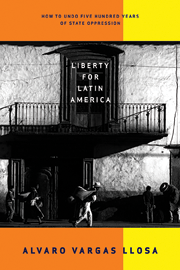WASHINGTON—Some assets rise because people feel there will be no end to their good fortune. That kind of “irrational exuberance” partly explains the dot-com bubble of the 1990s and the real estate bubble of the new millennium—to use the felicitous expression coined by former Federal Reserve Chairman Alan Greenspan, the man whose infelicitous management of the U.S. currency contributed to both. And then there are those assets that rise because of a fear of the future. Gold is by far the most interesting example.
The spot price of gold (which means the price for immediate delivery as opposed to a futures contract) hovered around $800 an ounce in December and is not far from $900 now. But it would be a mistake to conclude that, in the manner of various speculative assets in recent memory, gold has suddenly shot up. It has risen steadily since 1999; only in 2007, when the mortgage crisis hit the U.S., did it experience a sharp 30 percent rise.
Particularly important in relation to the stardom enjoyed by gold today is the fact that its price is being driven by managers investing the funds of ordinary people who are worried that inflation and the resulting weakness of the dollar will produce lasting damage to the U.S. economy. The growing demand for jewelry in countries such as India and China and the declining production of gold bullion in South Africa, the world’s No. 1 producer, have played a part in what is happening. But Peter Munk, the chairman of Barrick Gold, and others have repeatedly stated that the current price of gold is the child of investors rather than user demand.
Because of the awkward names given to investment funds these days, it is easy to lose sight of the fact that many of these institutions represent not a few wealthy speculators but millions of people trying to protect, or make good use of, their money. Some of this money is pouring into “exchange-traded funds,” which are simply pompous mechanisms through which people buy and sell bullion, among other commodities. These mechanisms now own more gold than most of the world’s central banks, in what amounts to a privatization of bullion. Unlike oil, whose rising demand has a direct connection to increasing economic production in places such as China, the demand for gold is not tied to productive needs so much as to the psychological factor we usually call insecurity.
What does this tell us about today’s world? Essentially, that trust in fiat money, the system by which the government manages the currency through the arbitrary manipulation of interest rates and the buying and selling of debt, is crucially low. Every new figure that seems to point toward a recession in the U.S.—for instance, the recent data related to a contraction in the manufacturing sector—increases the suspicion that the mismanagement of money has hurt the economy as a whole. So the people turn to gold.
At first sight, gold is an absurd investment—it doesn’t earn any interest. But putting money into gold becomes sensible once we realize that the value of gold is inversely proportional to the devaluation of the currency; the less that paper money is worth, the more gold is worth. Since the creation of the Federal Reserve in the early 20th century, the dollar has lost more than 90 percent of its value. That is why one dollar will buy you less than 1/800th of an ounce of gold today.
Gold, which used to be a symbol of the greed of empires, has ironically become a grass-roots revolt against the “imperial” management of money by the state. The Spanish conquistadors must be turning in their graves—and Peru, the world’s sixth-largest producer, is getting its revenge centuries after massive amounts of gold passed from the hands of the dictatorial Incas to the hands of the Spanish colonial bosses.
Of course, there is a difference. In colonial times, gold was actually the creator of, rather than a safe haven from, inflation; by flooding the European market with bullion from the Americas, the Spanish empire caused a general distortion of prices. Today, the general distortion of prices—reflected in the credit and housing market crisis—has led people, through their investment fund managers, to rush toward gold in search of protection.












